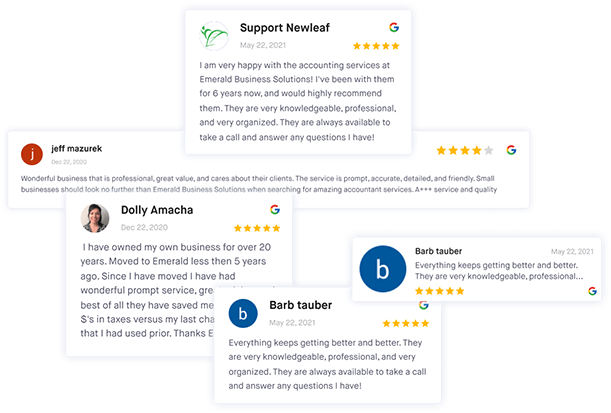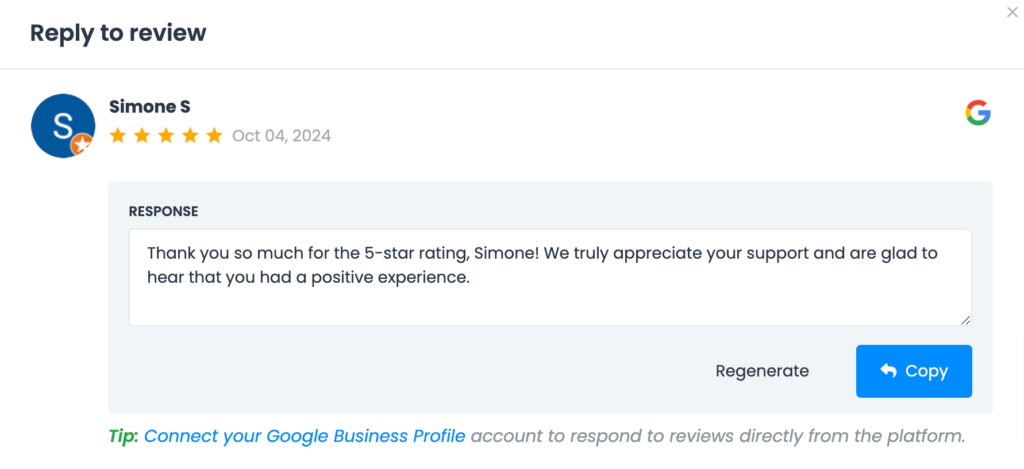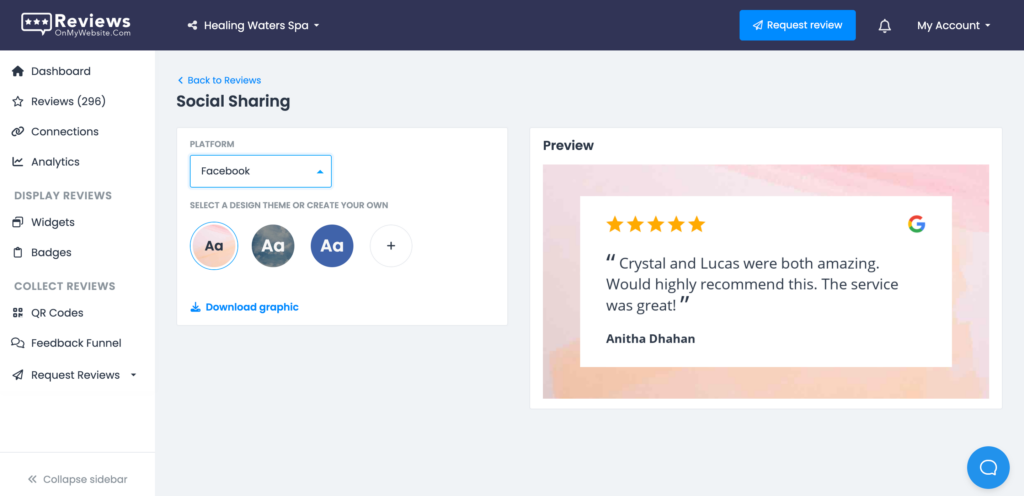Law firm SEO (search engine optimization) makes your website, content, and listings visible when clients search for legal services in your jurisdiction.
It goes beyond keywords—your site must answer real questions, earn trust with reviews and local listings, and meet Google’s YMYL standards while staying ethically compliant and accessible.
In this guide, we share 16 proven strategies you can implement now, from keyword research and city pages to citations and review management.
1. Nail Practice-Area And Location Keyword Research
Targeting the right “service + city” terms drives qualified leads faster than broad “lawyer” terms.
But before building pages, you need a clear keyword map that reflects how potential clients search.
Focus on head terms (e.g., “personal injury lawyer”) but also long-tail modifiers that indicate urgency or jurisdiction (e.g., “DUI attorney in Dallas open now”).
Here’s how to structure your research:
- Use Google Keyword Planner and Search Console: Check how many people are searching for your target terms and which phrases already bring visitors to your site. This helps you focus on opportunities that can deliver results faster.
- Mine “People Also Ask” and autocomplete: Look at the questions and suggestions Google shows when you type in a legal service. These reveal the exact language clients use, like “How much does a divorce lawyer cost in Chicago?”
- Balance head and long-tail keywords: Broad terms like “personal injury lawyer” build authority over time. Long-tail phrases such as “car accident attorney in Dallas free consultation” usually convert faster.
- Add jurisdiction modifiers: Always include city, county, or state names with your practice area keywords. This ensures you attract clients searching specifically for a lawyer in your location.
- Map keywords to pages: Assign each keyword set to a specific page, like a practice area or city page. This prevents multiple pages from competing for the same term and keeps your site organized.
This foundation ensures your law firm SEO strategy aligns with client intent and avoids wasted content. Done right, keyword research informs site structure, blog clusters, and even FAQ schema.
2. Build High-Converting Practice Area Pages
Pages that answer real client questions convert better and rank longer.
Your practice-area pages are often the first impression for high-value cases. They need to combine SEO best practices with conversion elements that make it easy to contact your firm.
Cover Client Pain Points Clearly
Each page should outline the legal problem, eligibility, process, and expected outcomes.
Clients searching for “workers’ comp lawyer in Boston” need to know how claims are filed, what benefits they may receive, and how your firm helps.
Demonstrate E-E-A-T
Include attorney bios, bar numbers, case studies (with disclaimers), and external citations to trusted sources.
This builds trust with both search engines and prospective clients.
Add Conversion Modules
Use sticky “Call Now” or “Free Consultation” buttons, short intake forms, and live chat to reduce friction. Keep disclaimers clear to remain compliant.
By structuring these pages around real client questions and clear actions, you both satisfy Google’s relevance signals and increase signed intakes.
3. Create City + Service Pages The Right Way
Scalable, unique city pages can rank—and pass compliance—if localized with proof.
Many firms try to scale by duplicating practice pages for multiple locations. This only works when each page includes authentic local signals. Otherwise, it risks thin content penalties.
Here’s how to localize effectively:
- Incorporate unique local elements: Mention courthouses, landmarks, and statutes that apply in that jurisdiction. This shows both Google and clients that the page is specific to their city.
- Embed maps and NAP details: Display your office location with an embedded Google Map. Always include your name, address, and phone number (NAP) in a consistent format across all locations.
- Feature local reviews and testimonials: Highlight feedback from clients in that city or region. Localized testimonials add credibility and increase conversion rates.
- Avoid duplicate content: Rephrase general practice content and add city-specific FAQs to keep pages unique. This prevents search engines from treating them as thin or repetitive.
- Connect with GBP and citations: Link your page to the correct Google Business Profile and relevant directories. This reinforces local signals and helps your office show up in the map pack.
Done right, city pages not only rank but also reassure clients that you understand their unique legal environment.

Improve your law firm's online reputation
Manage and improve your law firm's online reputation with ReviewsOnMyWebsite.
4. Optimize For E-E-A-T On YMYL Legal Pages
Demonstrated expertise and accountability are mandatory in the legal industry.
Because law is a YMYL (Your Money Your Life) category, Google demands stronger proof of authority and trust than most industries. Failing to meet these signals can hold rankings back even with strong technical SEO.
Strengthen Author and Firm Credentials
Show bar admissions, jurisdictions, awards, and memberships.
Every bio should link to official bar pages where possible.
Refresh and Cite Content Regularly
Add updated timestamps, link to statutes, and reference reputable organizations.
Outdated legal information can trigger trust issues with both clients and algorithms.
Build Supporting Pages
Include an editorial policy, privacy statement, and compliance disclaimers.
Also, add an About page with firm history and associations.
Optimizing E-E-A-T is not optional—it’s a ranking factor and a client trust factor.
Clients deciding between multiple firms often choose the one that looks more credible and accountable.
5. Implement Legal-Specific Schema Markup
Proper schema clarifies your entity and wins rich results.
Schema markup helps Google understand your practice areas, office locations, and attorneys.
This is especially valuable for law firms competing in crowded local packs.
Add these schema types to your site:
- LegalService and Attorney: Use LegalService schema to define your practice areas and Attorney schema to identify individual lawyers in your firm. This tells Google who you are and what services you provide, which improves visibility for highly specific searches.
- LocalBusiness: Add LocalBusiness schema to share your firm’s address, phone number, operating hours, and service areas. This helps Google display accurate local details in search results and boosts your chances of showing up in the Map Pack.
- FAQPage and Review: Implement FAQPage schema to showcase common client questions and Review schema to display ratings and feedback. Together, these can generate rich snippets that highlight credibility and improve click-through rates.
- Breadcrumb: Use Breadcrumb schema to show the relationship between pages on your site, such as Home → Practice Area → Location. This helps both users and search engines understand your site structure, making navigation smoother and rankings stronger.
- Multi-location schema: If your firm has more than one office, implement schema for each location separately. This ensures Google understands which services and reviews belong to each office, preventing conflicts between cities.
Always validate schema in Google’s Rich Results Test and Search Console.
When combined with strong on-page SEO, structured data increases click-through rates by showing ratings, FAQs, or operating hours directly in results.
6. Master Google Business Profile For Each Office
A complete Google Business Profile (GBP) is your local SEO control center.
GBP often determines whether you appear in the coveted map pack. It’s also where most clients look for reviews, directions, and hours.
To optimize your profile:
- Choose accurate categories and services: Select the most specific primary category for your practice (e.g., “Personal Injury Attorney” instead of just “Lawyer”). Add all services you handle so Google can match your firm with the right client searches.
- Add attributes and accessibility information: Include details such as wheelchair accessibility, women-led, or veteran-owned. These attributes appear directly in search results and help potential clients connect with your firm’s values.
- Upload geo-tagged images: Add authentic photos of your team, office exterior, and community events. Geo-tagged images reinforce your local presence and make your profile more engaging.
- Use GBP posts: Publish short updates, FAQs, or announcements about your practice. Regular posting shows activity, which can improve engagement and visibility in the map pack.
- Manage practitioner listings carefully: Attorneys with their own profiles should link back to the main firm listing. Review them regularly to prevent duplicates or outdated information that could confuse clients.
Since 86.2% of consumers use Google to look up reviews of businesses, a polished GBP with active review management is critical.

Improve your law firm's online reputation
Manage and improve your law firm's online reputation with ReviewsOnMyWebsite.
7. Build Authoritative Local Citations
Accurate NAP and legal directories fortify your local presence.
Citations confirm your legitimacy to both Google and clients. For law firms, the right directories also drive referral traffic.
Here’s where to focus:
- Legal directories: Submit your firm to Avvo, Justia, FindLaw, and your state bar directory. These sites carry strong authority in the legal industry and help validate your practice in Google’s eyes.
- Business directories: Claim and update your profiles on Yelp, the Chamber of Commerce, and the Better Business Bureau. These listings build trust with both clients and search engines while reinforcing your local presence.
- Alumni and university directories: Add your profile to alumni associations or university directories where possible. These links are often overlooked but come from highly authoritative domains that improve credibility.
Consistent citations prevent fragmentation and increase your chance of appearing in local searches.
8. Engineer A Repeatable Legal Link Building Program
Quality local and industry links move the needle in competitive niches like legal.
Backlinks remain one of the strongest ranking factors. For law firms, links must come from relevant, trusted sources.
Build Relationships That Scale
Engage with local bar associations, alumni groups, and legal nonprofits.
Offer expert commentary through HARO or Qwoted to earn high-authority citations.
Publish Legal Research And Insights
Develop original content such as local case law summaries, legislative updates, or annual trend reports.
Reporters, bloggers, and even other attorneys frequently link to credible first-party research that saves them time.
Sponsor Community Events
Support courthouse initiatives, legal clinics, or nonprofits—most will link back from event pages.
With the right outreach process, link building becomes repeatable and impactful.
Unlike generic SEO campaigns, a law firm SEO strategy must prioritize authority links over volume.
9. Ship Content That Builds Topical Authority
A planned content cluster outranks ad-hoc blogging.
Blogging once in a while won’t cut it in legal SEO. To dominate, you need structured topical authority.
- Develop topic maps: Plan out content clusters that cover every angle of your main practice areas, such as DUI defense or personal injury. This signals to Google that your firm is a comprehensive resource and helps you rank for more client questions.
- Use briefs and editorial calendars: Assign attorneys or staff as subject matter experts (SMEs) to provide insights for writers. An editorial calendar ensures you consistently publish useful content instead of ad-hoc blog posts.
- Write in plain English: Avoid heavy legal jargon that confuses readers. Clear, everyday language makes your content more approachable and keeps potential clients engaged.
- Refresh regularly: Laws, statutes, and deadlines change frequently. Update your pages with the latest information so both Google and clients know your advice is current.
- Add multimedia: Videos, podcasts, and infographics make complex legal concepts easier to understand. Always include transcripts or captions so the content is accessible and optimized for search.
This approach builds authority faster, as Google sees comprehensive coverage of a subject rather than isolated articles.
10. Improve Technical SEO & Core Web Vitals
Technical SEO simply means making sure your site runs smoothly so search engines can read it and visitors don’t get frustrated.
Google now looks at page speed, mobile usability, and stability—known as Core Web Vitals—as part of its ranking system.
For law firms, these details directly impact whether a client stays on your site long enough to call or leaves for a competitor.
Focus on:
- Page speed: Compress large images and remove unnecessary code so your site loads in under three seconds. You can also use a Content Delivery Network (CDN) to make pages load faster for visitors across different regions.
- Mobile-first indexing: Google primarily looks at the mobile version of your site when ranking pages. Make sure menus, forms, and “click to call” buttons work smoothly on smaller screens.
- Clean site structure: Organize your pages in a logical hierarchy so both Google and clients can easily navigate. Use XML sitemaps to show search engines the important pages on your site.
- Security: Secure your site with HTTPS and valid SSL certificates to protect sensitive client data. Regularly run security scans to catch vulnerabilities before they become problems.
- Error management: Broken pages (404 errors) and messy redirects create a bad user experience and hurt rankings. Schedule quarterly audits to fix errors and update your robots.txt file so search engines crawl the right pages.
Running a law firm SEO audit at least twice a year ensures these elements stay current. Without technical hygiene, even great content can remain invisible.
11. Design For Intake Conversion & Accessibility
Great user experience (UX) means more clients hire your firm. A polished website alone won’t bring in cases — it has to be easy to use for everyone.
When your site is accessible and offers simple ways to contact you, more visitors become paying clients.
Build Accessible, Compliant Interfaces
Follow WCAG standards with readable fonts, high-contrast colors, and alt text on all images. Ensure navigation works seamlessly for screen readers so users with disabilities can still access important information.
Accessibility compliance isn’t just good practice—it reduces legal risk for your firm. It also broadens your potential client base by making your site usable for everyone.
Simplify Conversion Points
Add sticky “Call” and “Chat” buttons, short intake forms, and segmented options by case type (e.g., “Injured at work?”). Streamlined paths to contact reduce friction and make it easier for visitors to take action.
Test these elements on both desktop and mobile to confirm they’re visible without scrolling. Every extra click you remove increases the likelihood of a client reaching out.
Showcase Trust Signals
Highlight verdicts, settlements, and accreditations with clear disclaimers so compliance is never in question. Add client reviews using a Google Reviews Widget to display authentic social proof directly on your site.
These signals reassure potential clients that you’ve successfully handled cases like theirs before. They also give search engines more proof of your credibility, which can support higher rankings.
By aligning UX with intake goals, you convert more visitors into consultations while ensuring compliance.
12. Systematize Review Generation & Responses
Consistent, compliant review flow boosts local rank and trust.
Reviews are both a ranking signal and a trust driver. Yet 52% of businesses say customers forgetting is the biggest obstacle to getting more reviews. Law firms need a system.
Here’s how to build one:
Automate Requests
Use ReviewsOnMyWebsite to send automated email or SMS review requests after a case is closed. Timed outreach increases the likelihood of responses while keeping the process compliant with bar rules.
Automation also prevents requests from slipping through the cracks when staff get busy. Over time, this creates a steady flow of reviews instead of sporadic spikes.
Target Key Platforms
Focus on Google first, then add Avvo, Yelp, and bar associations where permitted. Spreading reviews across multiple sites builds a stronger and more balanced online reputation.
Google reviews help you appear in the local map pack, while Avvo or bar sites improve authority within the legal community.
A diverse review footprint protects your firm if one platform changes its policies or loses visibility.
Respond to Every Review
ReviewsOnMyWebsite’s AI review response feature helps you draft professional, bar-compliant replies quickly.

Thoughtful responses demonstrate you care about client feedback and improve credibility with search engines.
Responding also signals transparency—future clients see how you handle praise and criticism alike. Even a brief acknowledgment can make your firm appear more approachable and trustworthy.
Train Staff
Give intake and paralegal staff simple scripts on how and when to ask for reviews. Proper training ensures requests are consistent, ethical, and aligned with firm-wide policies.
Staff should know the exact timing (such as after a positive resolution) and how to phrase the ask without pressure. This avoids compliance risks and helps clients feel comfortable sharing their experience.
Promote Positive Reviews
ReviewsOnMyWebsite’s Social Sharing feature helps you promote standout reviews on your social channels.

Highlighting authentic feedback amplifies social proof and reassures potential clients before they contact you.
Sharing reviews in newsletters or on LinkedIn can also attract referrals from professional peers. The goal is to let satisfied clients become visible advocates for your firm.
Since 78.3% of buyers say thoughtful responses to negative reviews build trust, review management can directly impact client decisions.

Improve your law firm's online reputation
Manage and improve your law firm's online reputation with ReviewsOnMyWebsite.
13. Win “Near Me” And Map Pack With Local Content
Hyperlocal content aligns with proximity-based queries.
Appearing in “near me” results often comes down to hyperlocal signals. Content that demonstrates community relevance gives your firm an edge.
- Publish guides tied to local courts and venues: Write content that explains filing processes, courthouse addresses, and what clients should expect on the day of a hearing. These guides are both practical for clients and strong local signals that show Google your firm serves that exact jurisdiction.
- Create neighborhood landing pages: Develop pages that cover ZIP codes, suburbs, and nearby cities within your service area. This helps you capture searches from potential clients who don’t live downtown but still need legal services in your region.
- Develop situational posts: Write content like “What to do after a car accident in Denver” that directly addresses urgent, location-specific scenarios. Posts like these align with how clients search in moments of need and can quickly bring in intake-ready leads.
- Align GBP posts with site content: Regularly update your Google Business Profile with short posts that link back to relevant pages on your site. This reinforces proximity signals, keeps your profile active, and increases the chance of showing up in the local map pack.
Local content not only boosts SEO but also positions your firm as a community authority.
14. Track Intake, Signed Cases, And ROI Properly
You can’t scale what you can’t measure.
Law firm SEO campaigns must tie rankings and clicks to actual consultations and signed cases. Without tracking, budgets can’t be justified.
Here’s what to implement:
- Google Analytics 4 + Search Console: Use GA4 to monitor traffic trends and user behavior while Search Console shows which keywords are driving visibility. Together, they reveal both the volume of opportunities and the queries clients actually use.
- Dynamic number insertion (DNI): Set up DNI so each visitor sees a unique phone number tied to their traffic source. This lets you attribute calls to SEO, ads, or referrals instead of guessing.
- UTM standards: Add UTM parameters to every campaign link, from newsletters to social posts. Consistent tagging ensures you can compare channels fairly and avoid data gaps.
- Form tracking + CRM integration: Connect your intake forms directly to your CRM so every inquiry is logged automatically. This way you can see not just leads but also consultations booked and cases signed.
- Pipeline reporting: Build reports that show each stage—lead → consult → signed client—so you know your actual ROI. Tracking the full journey clarifies whether SEO is delivering paying cases, not just clicks.
15. Build A Multi-Location SEO System
Structured location architecture avoids cannibalization and boosts coverage.
Multi-office firms must organize websites so each location ranks independently.
Create a Clear Site Architecture
Use a hub-and-spoke structure with a main location hub, individual office pages, and dedicated practice area pages. Each office page should include unique NAP details, embedded maps, and localized content.
This structure helps search engines understand which office serves which area, reducing confusion. It also makes it easier for users to navigate directly to the location or service that’s most relevant to them.
Manage Practitioner Pages Separately
If attorneys work across multiple offices, create bio pages linked to each office but avoid duplicate Google Business Profile listings.
This ensures that individual lawyers gain authority without fragmenting the firm’s local SEO presence. Include credentials, bar numbers, and areas of practice to strengthen trust.
Clear linking between bios and office pages also improves internal navigation and user experience.
Localize Links and Reviews
Set goals for each office to earn its own backlinks and client reviews. Promote reviews from clients in each city separately.
Local links and testimonials help each office page rank in its own market rather than competing against each other.
Encourage satisfied clients to mention the specific office location in their reviews for added local relevance.
16. Prepare For AI Overviews & Entity-First SEO
Entity clarity and authoritative sourcing increase AI visibility.
With Google’s AI Overviews and other generative search features, firms must optimize for entity recognition.
- Unify brand and attorney entities: Keep your law firm name and attorney names exactly the same across directories, schema markup, and bios. This consistency makes it easier for Google to connect your practice to the right entity and avoids splitting authority.
- Seed expert quotes in content: Add short, quotable insights from attorneys in your firm directly into practice area pages and blog posts. These quotes often surface in AI-powered summaries, giving your firm more visibility and authority.
- Use first-party evidence: Reference court documents, verdicts, and settlements where ethically appropriate, always paired with clear disclaimers. Demonstrating direct experience with real cases builds credibility and distinguishes your content from generic advice.
- Expand schema completeness: Go beyond basic schema and implement LegalService, FAQ, and Review markup to clarify your services. Rich results not only improve click-through rates but also help Google fully understand your content.
- Write conversational answers: Include plain-language responses to common client questions, such as “How long does a divorce take in [city]?” or “What happens after an arrest?” Writing in natural phrasing anticipates how people actually search and improves your chances of showing up in AI and voice results.
Preparing now positions your firm as a credible source when AI-driven results expand.
Frequently Asked Questions About Law Firm SEO
What Is Law Firm SEO?
Law firm SEO is the process of improving your website and local presence so prospective clients can find you when they search for specific legal services in your jurisdiction.
It combines keyword targeting, on-page content, technical hygiene, local listings, reviews, and links. For legal—which is a YMYL category—trust elements like credentials and accurate information are essential.
What Is The Role Of Backlinks In Law Firm SEO?
Backlinks signal that reputable sites vouch for your content, which helps search engines trust and rank your pages.
For firms, quality beats quantity—links from bar associations, universities, local media, and legal publishers carry more weight. Pair link acquisition with strong content and a clean site so those signals can work.
How To Build Local Citations For Law Firm SEO?
Start with Google Business Profile, then complete legal directories like Avvo and Justia, and local business directories (Chamber of Commerce, city guides).
Keep your name, address, and phone (NAP) consistent everywhere, including disclaimers and policy pages that often get missed.
Maintain a change log so future moves or number changes don’t fragment your citations.
What Are Some Effective Law Firm SEO Strategies?
Prioritize high-intent “service + city” pages, optimize your Google Business Profile, and earn local authority links.
Publish plain-language guides tied to your practice and jurisdiction, and implement legal schema for clarity. Systematize review requests and responses to strengthen both rankings and conversions.
How To Measure Law Firm SEO Campaign Success?
Track beyond rankings: measure organic calls, forms, consultations booked, and signed cases. Set up GA4, Search Console, UTM standards, and dynamic number insertion (DNI) so you can attribute outcomes correctly.
Report monthly on leading indicators (visibility, CTR, conversions) and quarterly on signed-case growth.
How To Audit A Law Firm Website For SEO?
Run a technical pass (crawlability, Core Web Vitals, HTTPS) and map keywords to pages to find gaps or cannibalization.
Review E-E-A-T elements on YMYL pages (author bios, sources, policies), and validate schema. For local, inspect GBP completeness, NAP consistency, review velocity, and directory coverage.
How To Create An SEO Strategy For A New Law Firm?
Start by defining your main practice areas and target geographies, then build a simple site with practice pages, city pages, attorney bios, and clear calls to action.
Complete your Google Business Profile and set up tracking tools like GA4, Search Console, and call tracking.
In the first 90 days, focus on technical stability, a small content cluster, and review generation. From there, expand with more city pages, deeper guides, and local link building.
Build A Law Firm SEO Engine That Attracts, Assures, And Converts
Law firm SEO isn’t a one-time project—it’s a system that compounds over time. By consistently optimizing for visibility, trust, and usability, your firm builds an engine that keeps attracting new clients month after month.
Start by sequencing the highest-impact wins, like fixing technical issues, publishing core practice pages, and launching review requests.
Then expand into content clusters, local links, and multi-location strategies once the foundation is in place.
Document your workflows and standard operating procedures (SOPs) so progress is repeatable, not dependent on one person. Revisit data quarterly to see which strategies generate signed cases, then double down on what works.
With the right law firm SEO strategy, your firm becomes the trusted choice when prospects search—assuring clients they’ve found the right representation and converting more of them into signed cases.




